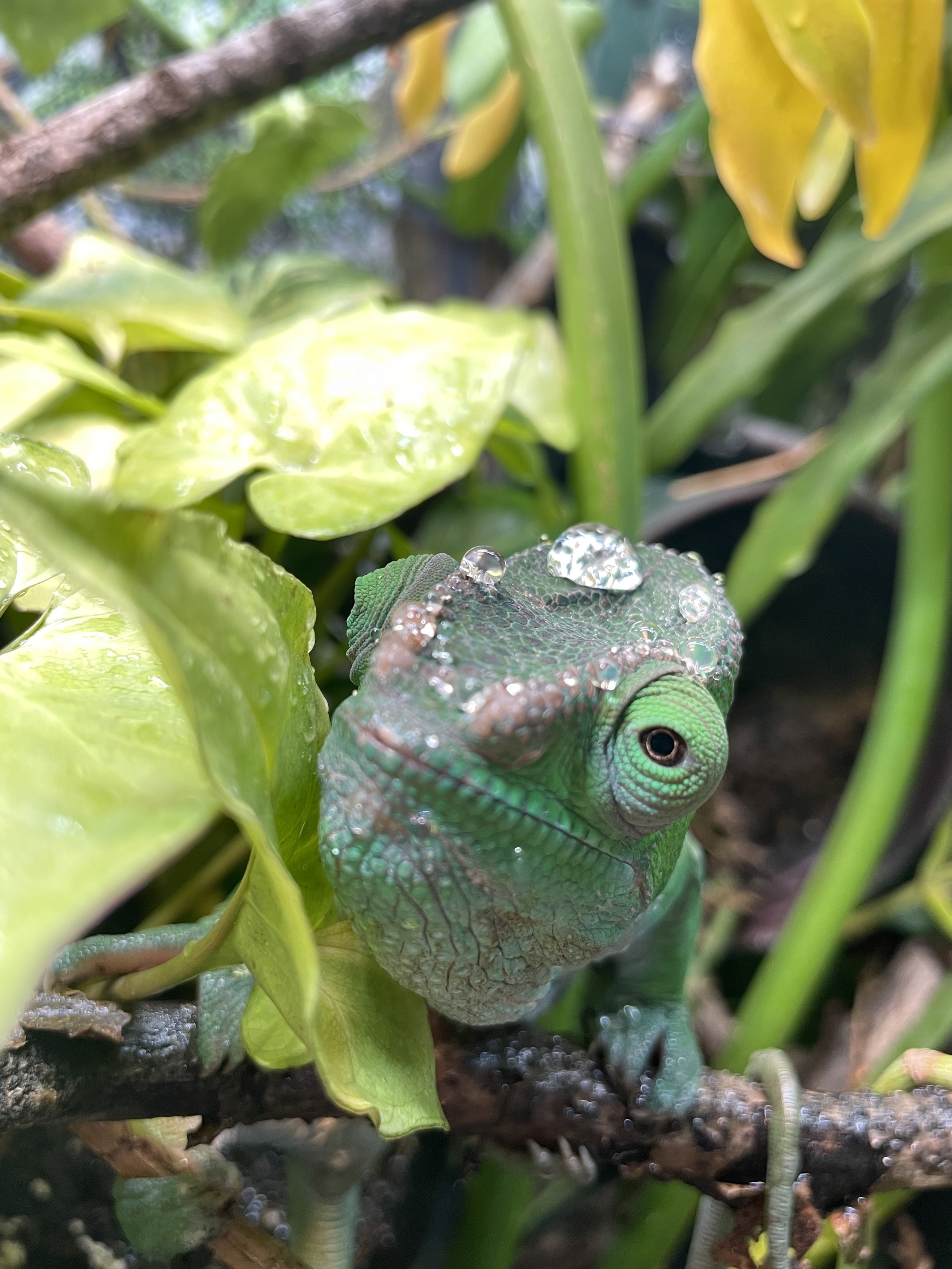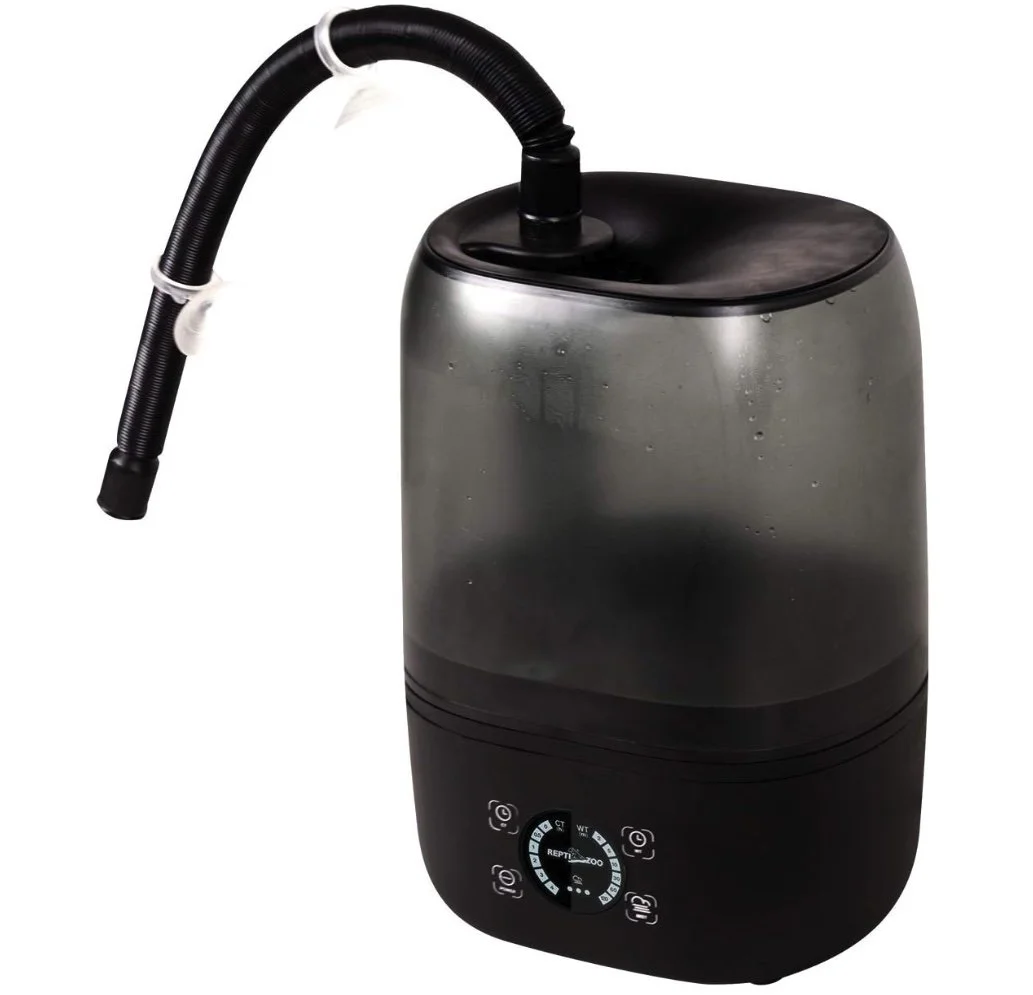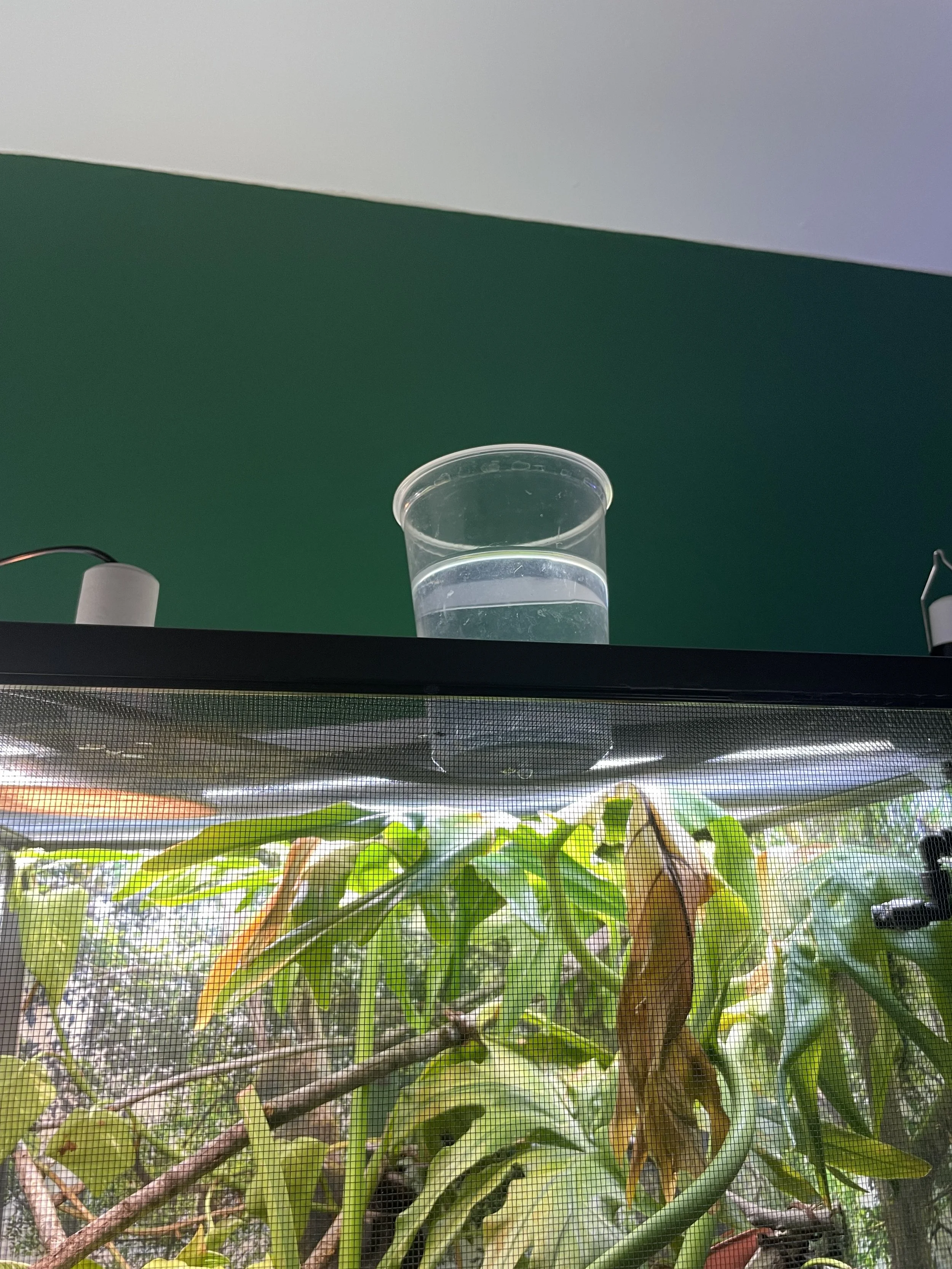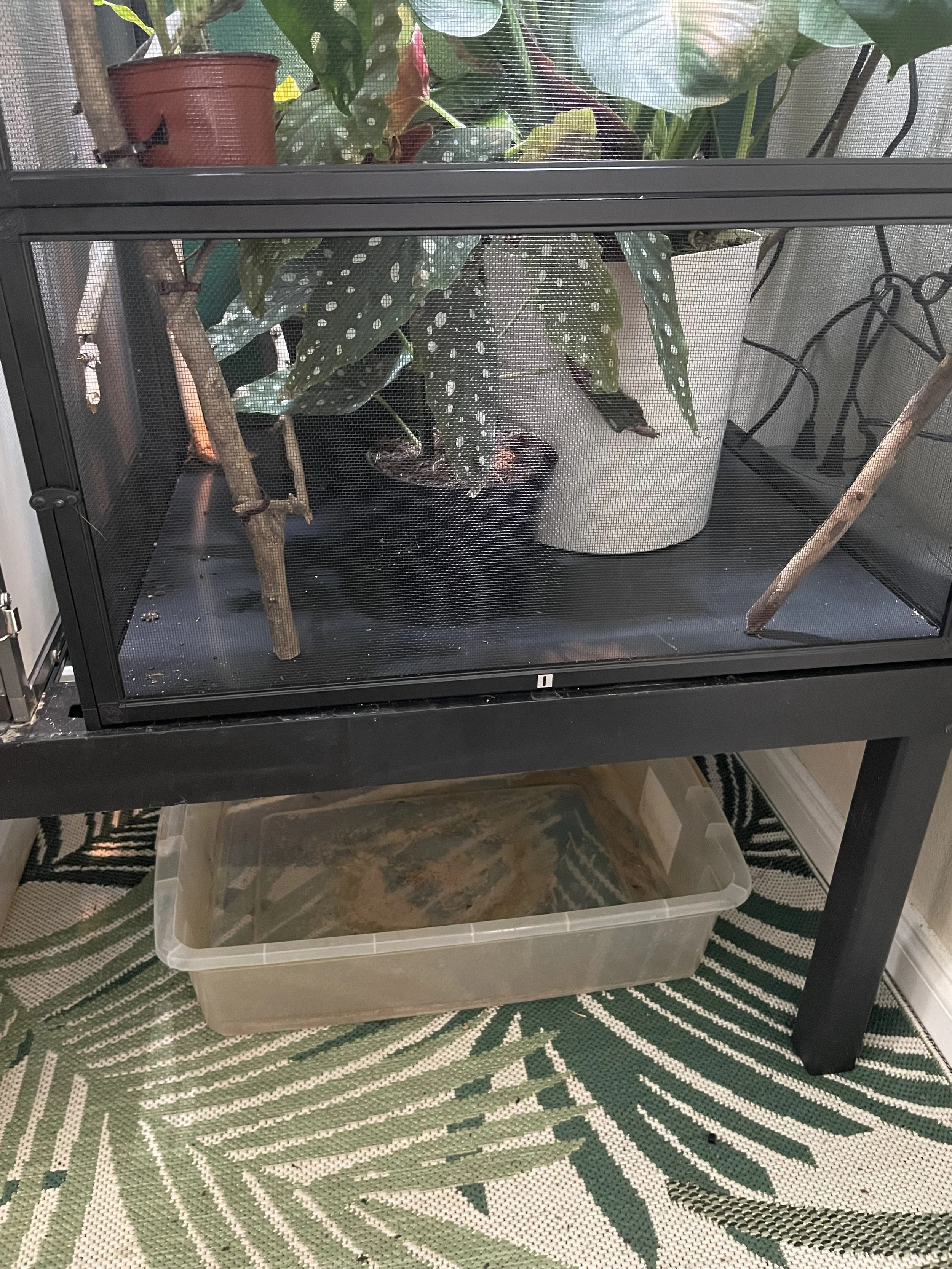
WAter, Water, & More Water
How does a chameleon drink?
Let me start off by saying there are a lot of hydration methods when it comes to chameleons. I am going to share what has worked for me and what I recommend to new chameleon keepers I mentor. I hope once you learn more about chameleon care that you feel empowered to customize your hydration schedule based on your environment and specific chameleon. Chameleons are attracted to movement with their food but also with their water which is why we use things like misters, drippers, etc. instead of water bowls. Chameleons are shy drinkers so try not to freak out if you don’t see your chameleon drink. Avoid using water features like a waterfall which can be hard to keep clean and sanitary for your chameleon.
Hydration tools
-

Misters
We use a mister to help maintain the appropriate humidity levels and provide moving water for our chameleons to drink. You can manually mist your enclosure with a spray bottle, or you can customize an automatic misting system to mist on a set schedule. The MistKing is my favorite automatic mister that I have been using for 5+ years. I know it can be pricey but it is a GREAT purchase so that you can automate your enclosure to be able to go on vacation and have peace of mind that your chameleon is hydrated. Not to mention your hand will thank you for not having to stand there for 2 minutes and mist.
-
Drippers
The dripper is a small container you fill with water to put above the enclosure to drip water onto your chameleon’s plants to provide additional drinking opportunities. It’s not a necessary item to have but can come in handy. You can purchase a dripper or even make your own!
-

Foggers
Foggers are used to help increase the nighttime humidity level for a chameleon. The fogger can help simulate fog rolling in at night which is what they would experience in the wild. And then they can breathe in the moist air and stay hydrated that way. If you live somewhere humid then it’s likely you won’t need a fogger to achieve the higher nighttime humidity requirements.
How often to use a Mister?
How often you mist is VERY dependent on your environment and what your species requires. People who live in humid places like Florida may only need to mist once a day and actually run a dehumidifier. Compared to someone who lives in a drier climate like Colorado who may need to mist for longer sessions and wrap the sides of their enclosure to try and hold in the humidity.
The general recommendation in the chameleon hobby right now is to mist 2-4 minutes in the morning before lights turn on and 2-4 minutes at night after lights turn off. Avoid spraying your chameleon directly. You will be very tempted to mist them during the day to make sure they are getting enough water – try not to do this. Instead, monitor your chameleon’s poop to make sure they are staying hydrated. If you mist during the day, you’re creating a hot and humid environment which is not ideal for a chameleon. Allow your enclosure to dry out throughout the day.
I would suggest placing your MistKing nozzle in one of the front corners so that it can point towards the center of the enclosure. You can adjust the angle of the nozzle so that it will avoid misting your walls. You also have the option to add a cool looking background (discount code: NEPTUNE10) to the back of your enclosure which can also help mitigate the amount of water that hits your walls.
How often to use a dripper?
I only use my dripper 1-2x a week for about 2 hours. If your misting and fogging schedule is doing it’s job then your chameleon shouldn’t really need a dripper. But I like to use mine if nothing else, to water my plants since your dripper should be positioned over your plants so that it can drip onto the leaves and create movement.
How often to use a fogger?
First off, foggers should only be used at night to achieve the higher nighttime humidity level requirements. Do not use your fogger during the day. How often you fog, or if you need to fog at all, depends on the natural nighttime humidity of where you live. Most keepers just fog for the first part of the night for an hour or two or in short intervals, 15 minutes on and 45 minutes off, instead of fogging all night.
How to tell if a chameleon is hydrated?
Urates are a white/cream color (no more than 50% orange)
Eyes are plump and rounded
Humidity levels
Below are the current humidity ranges recommended for the commonly kept species. These are general guidelines and are subject to change as the hobby is learning more about chameleon care. These numbers are measured via a hygrometer (which can be found in the shopping lists) and are controlled by a multitude of factors including the natural humidity of where you live, how many live plants are in the enclosure, how often you’re misting, how long you are misting, if you are using a fogger, etc. Remember that you're aiming for your humidity to be higher during the night and should be 70% or higher.
DAYTIME RELATIVE HUMIDITY
Veiled chameleon: 40-50%
Panther chameleon: 50-60%
Jackson’s chameleon: 30-50%
NIGHTTIME RELATIVE HUMIDITY
All species: 70-100%
How to raise the humidity levels?
Use live plants
Wrap the sides of your enclosure with a shower curtain or vinyl background
Adjust your misting schedule
Make your enclosure bioactive
How to Lower the humidity levels?
Use a dehumidifier
Adjust your misting schedule
Allow your enclosure to dry out during the daytime
How do you deal with all of the water?
Between the misters, foggers, and drippers, there is a lot of water that comes with a chameleon enclosure. There are lots of different ways you can manage the water, but I will share what I do. I drill a few small holes in the bottom of the PVC floor and put my enclosure on top of a garage shelf and a bucket underneath. The water will pool towards the center and be caught in the bucket below. The rest of the water should be caught by the large potted live plants at the bottom of the enclosure.

